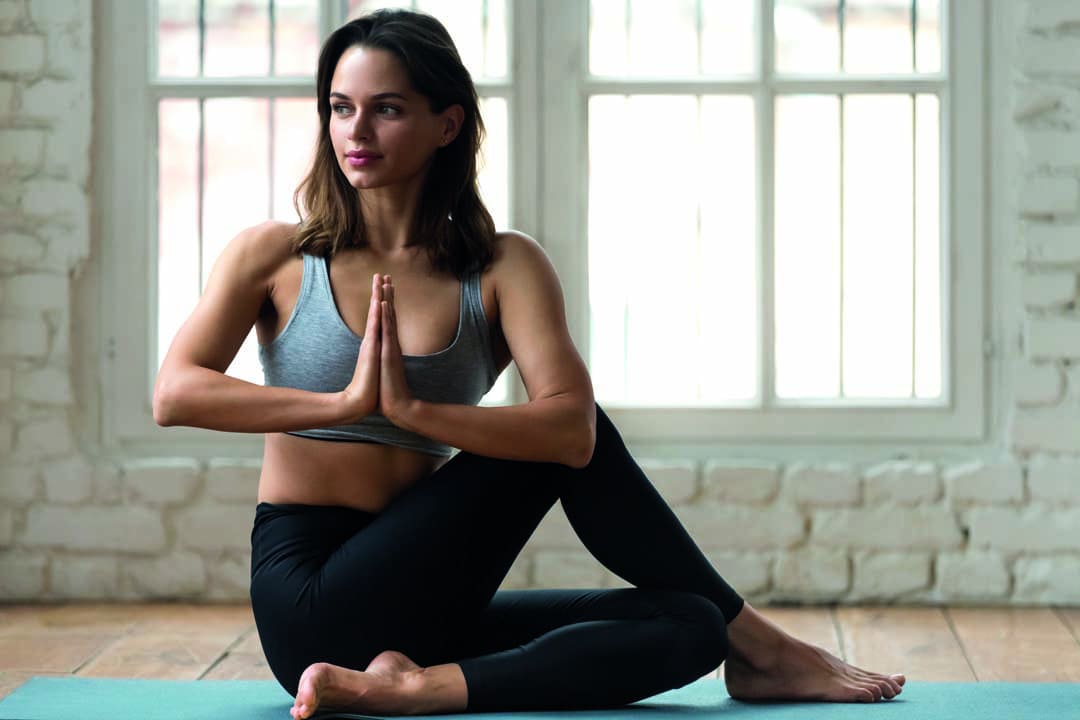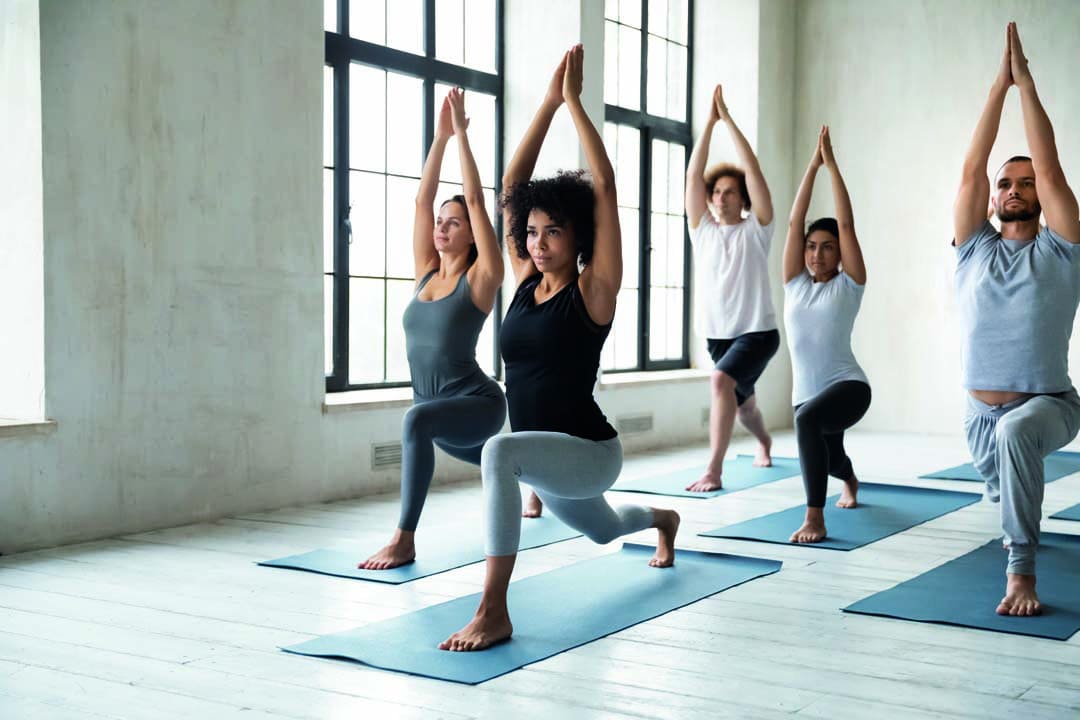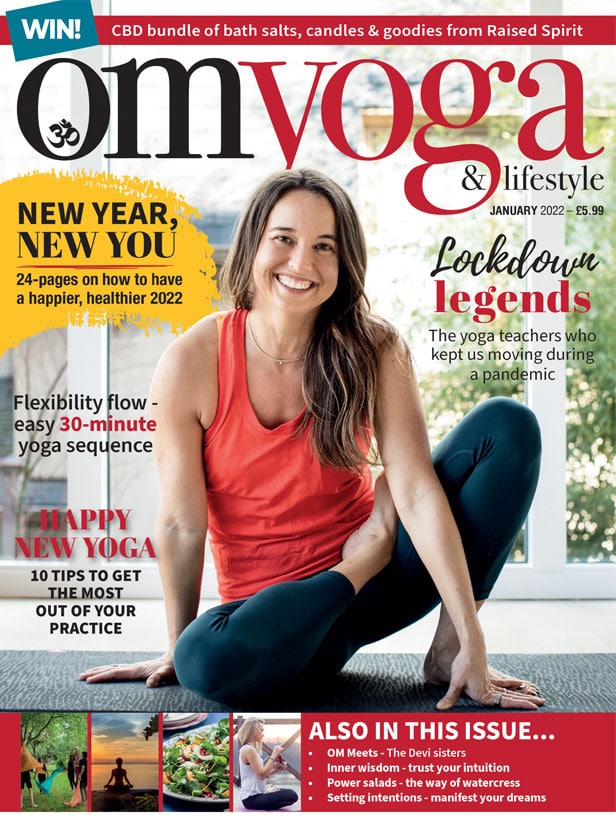
To advance, become a beginner
Want to become more advanced? Well then, you’re going to need to become a beginner again. By Andrea Marcum
There’s a saying that we begin again every time we step onto our mat. So, whether you are brand new and literally stepping onto your mat for the first time, or years into your yoga practice, we are all essentially beginners together. The beauty of being a beginner is the ‘beginner’s mind’. The mind of a beginner is one that is open and ready to learn. It’s not bogged down with what it thinks it already knows. There is a fresh, newness to everything.
Becoming a beginner is nothing new
Seeking a wide-open beginner’s mind in the face of our stories, prejudices and excuses is nothing new to us humans. The Bhagavad Gita, a sacred Hindu scripture and an important historical yogic text written sometime between the fifth and second century BCE, is the conversation between Krishna and Arjuna before the start of the Kurukshetra war. From a yogic point of view, it addresses the tension between our easily distracted senses and pre-existing impressions, and the clarity of intuition that is part of an uncluttered beginner’s mind. This plays an essential role in how we view our place in the world as an individual versus a being unified with all.
It is an exploration of how to balance Self (Atman) and the Supreme Being (Bhagavan).
Mahatma Gandhi says of the Gita “it is an allegory in which the battlefield is the soul and Arjuna, man’s higher impulses, struggling against evil.”
Are we Arjuna?
As we climb onto our mat, we are a bit like Arjuna: grappling with our own unfortunate tendencies (hopefully they’re more bothersome than they are ‘evil’). We’re asked to become fully focused, to land in the present instead of ruminating into the past or anticipating the future.
We find that there are myriad emotions involved in trying to create stillness, and to staving off the agitation of our impulsive minds.
Not to mention that we’ve become addicted to swinging from instant messaging to instant checkout to Instagram to insta-alarmist sound bites and back again like monkeys swinging from branch to branch.
In this jungle of immediate and often vapid ‘communication’, it’s easy to lose sight of anything higher, larger or universal.

What does Arjuna have to do with asana?
Maybe you started doing yoga because you were looking for a workout? The physical incentive is a great place to start. BKS Iyengar himself said: “Penetration of the mind is our goal, but in the beginning, there is no substitute for sweat.” Working our muscles feels immediate, almost instantly we feel like we are inviting improvement. But if we’re going to truly liberate ourselves, focusing only on our bodies will not be enough. Asanas (yoga poses) are living laboratories that allow us to learn about who we really are, body and mind, if we’re willing to begin where we are and learn to listen. Each pose offers a quintessential moment, breath by breath, for us to witness that the way we operate on our mat is the same as we do off of it. You might say that our asanas are like Arjuna’s soulful battlefield.
Step onto your battlefield
What if I were to tell you that a simple downward-facing dog could be the beginning of transformation? That this seemingly simple pose could be the gateway to your beginner’s mind? Prepare to climb into downward facing dog (adho mukha svanasana), but before you do, prepare to begin again. Even if you’re an old pro convinced you’ve got this dog nailed and can do it blindfolded with your hands tied behind your back. Even if you’ve done a bazillion of them, imagine this is your first down dog ever, and you are feeling it in such a way as to describe every nuance to someone who won’t get the chance to do one of their own.
Ready?
Curl your toes under, lift your hips up and back, and turn your body into an inverted ‘V’.

The field of awareness
In downward dog, spread your hands wide, shoulder-distance apart on your mat, careful to press down into the index finger and thumb and not let them crinkle up with tension or neglect. Nerd out a little bit on this fundamental connection to the earth. Pay close attention to where your body meets the ground as well as how it lifts and extends away from the pull of gravity. Think of your hands reaching deep into your personal soil, and of down dog as the greenhouse where your mindfulness blossoms and grows.
It can be tempting to default to been-there-done-that disinterest, or to the hamster-wheel of ‘nothing’s ever enough’, but in our postures, as in life, if we seek the curiosity of a beginner, we can truly progress.
To me, advanced yoga has less to do with elaborate acrobatics or how flexible our body is…it’s the awareness and integrity with which we do the simplest of things.
Dig up something new
While you’re here in down dog beginning again, are you breathing? Are your wrists sore? Is there tightness anywhere? Is it stretch or strength that you notice most? Where? How would you describe this to that person who won’t be doing their own? Can you make one brand new discovery about the posture that you’ve never noticed before?
That might be a physical sensation or even an emotional response.
Zen Master Suzuki said: “In the beginner’s mind there are many possibilities, but in the expert’s there are few.” Are resistance or impatience bubbling up and limiting your perception of newness? Can you set them aside and return to your beginner’s mind?
Creating space is creative space
Down dog is a pause in vinyasa yoga where we take inventory as to how and what we’re feeling in that particular moment; where we check in with our breath and re-establish our focus. It’s the end of one vinyasa and the beginning of another. Pausing to pay attention to subtleties creates conscious space for something new.
When we walk this spirit of ongoing inquiry off our mat and into our relationships, our work, our habitual behaviour, we inspire a new sense of resourceful originality to carry with us onto the ultimate soulful battlefield…the battlefield of life. We find ourselves ‘living the question now’ and we fully embody the understanding that to advance we must become a beginner.
Andrea Marcum is a yoga teacher offering livestream and on-demand classes online, workshops and retreats, and the author of the critically acclaimed book, Close to OM. Visit: andreamarcum.com




